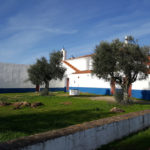According to a report from CNN, those interested in stargazing in the Alentejo may be in for a treat this Christmas as the planets of Jupiter and Saturn will appear to be almost touching—something that hasn’t occurred since the year 1226!
The two planets, the largest in our solar system, will best be visible on the night of the winter solstice – December 21 – when they should look like a ‘double planet’, and the closer you live to the Equator the better you will see them.
Because of its relative lack of light pollution, the Alentejo countryside should be a great place to view this conjunction, so we just need to hope for clear skies and look to the west close to the horizon just after sunset. The planets will be visible with the naked eye, but if you own a telescope or binoculars, even better.
This exciting event will be visible around the world and even though the planets will appear to be almost touching, they are actually hundreds of millions of miles apart. A great place to view this happening would be at one of the many megaliths and spiritual sites around Estremoz.
This seems like the perfect opportunity to try stargazing in the Alentejo, so don’t forget to look skywards when taking that twilight stroll or settling down for the evening, and from December 16 to 25 you should be in for a treat!



